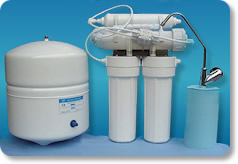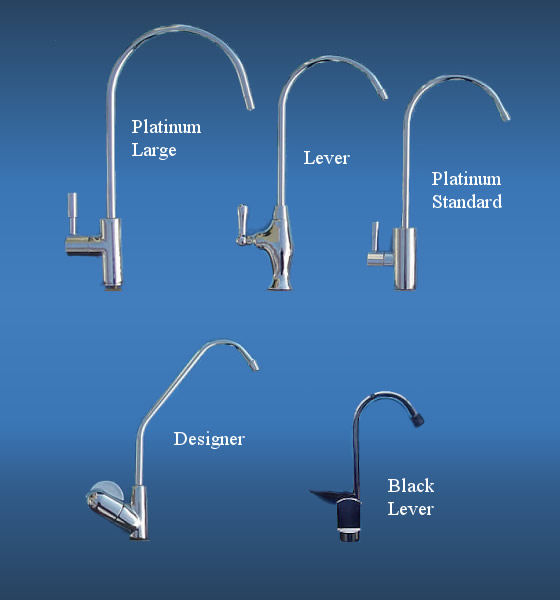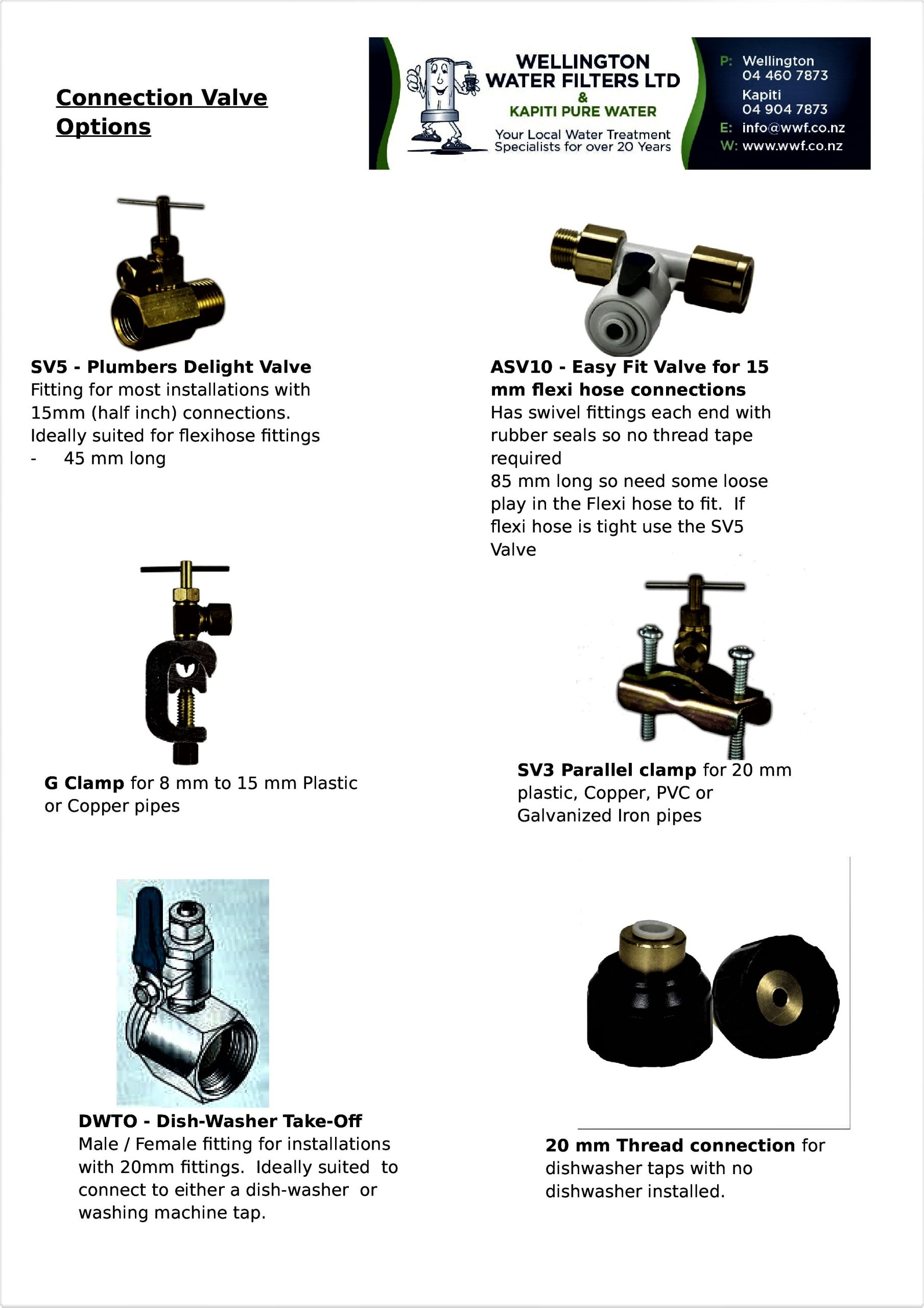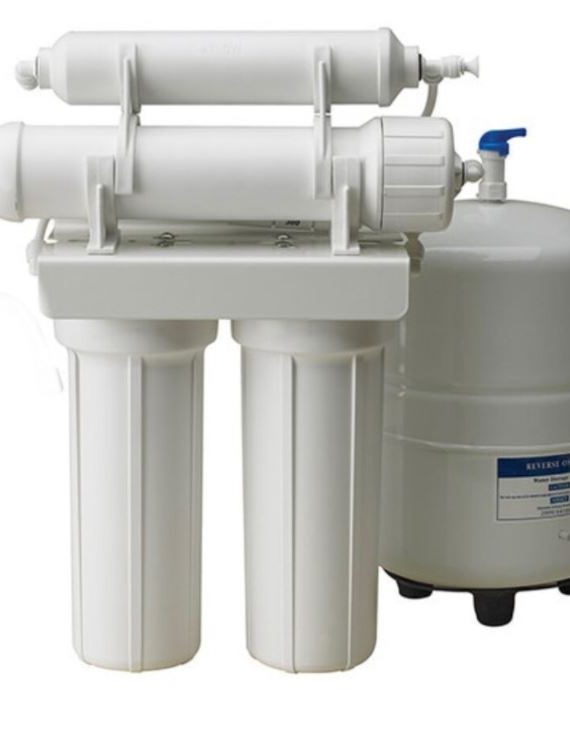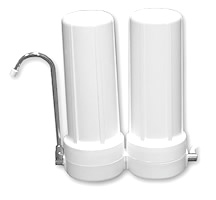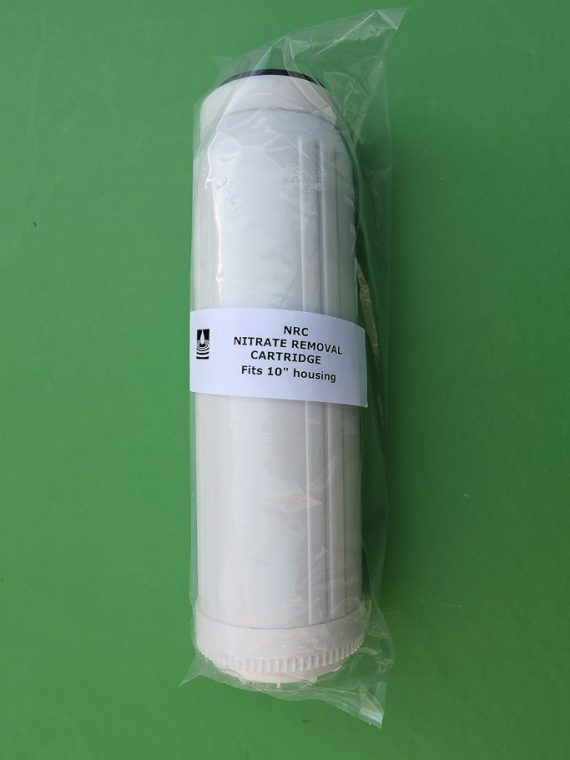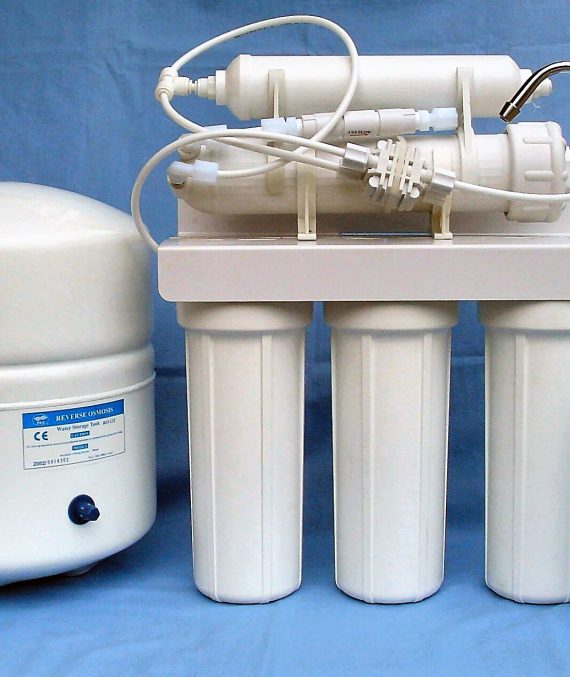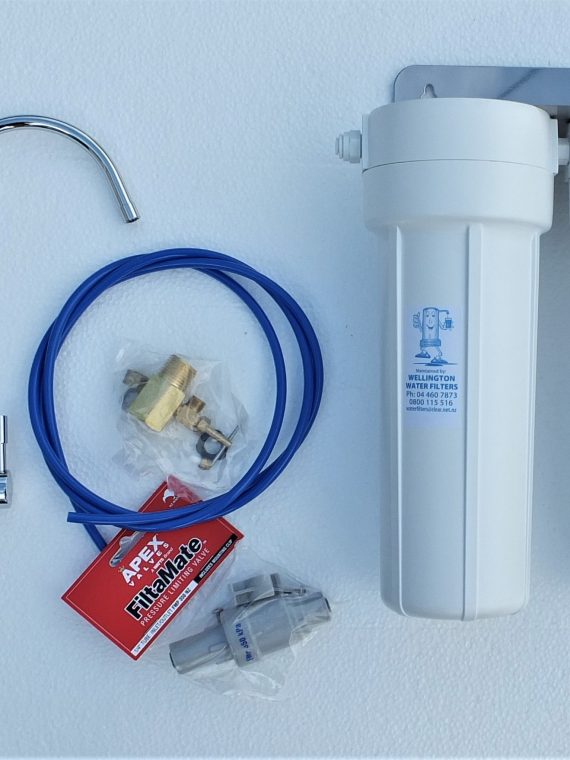Why Reverse Osmosis (R/O)?
Reverse Osmosis water purifiers are the optimum system for removal of contaminants from water as they filter down to an ionic level of 0.001 microns. Not only are they very efficient at removing a wide range of chemicals, heavy metals, micro plastics, bad taste and odour, they will also remove fluoride, bacteria and all the ‘dissolved solids’ from the water which normal water purifiers will not remove. ( ‘Dissolved solids’ are mostly minerals which are dissolved into (or attached to) the water molecule.
Typically bore water can contains around 120 to over 1000 parts per million ( PPM ) of dissolved solids. After passing a standard carbon based water purifier the Total Dissolved Solids ( TDS ) reading will not have changed. After passing a reverse osmosis membrane the reading will drop around 95 to 98 %. Consequentially the texture of the water has a slightly smoother, silky feel to it compared with non R/O water.
In contrast to distilled water, which is often referred to as ‘dead water’, Reverse Osmosis water retains oxygen and has a sweeter, more pleasant taste.
How do they work?
After passing at least one pre filter to remove sediment the water passes over a semi permeable membrane. The water pressure pushes the pure water molecule through the membrane while the waste product is discharged into the kitchen waste pipe. For every 10 litres of pure water processed, approximately 25 litres goes down the drain. Although this sounds wasteful, it is around the same as running a standard ‘low flow’ shower for only two minutes.
Types Available
Because the RO membrane is slow to produce pure water ( between 3 to 6 litres per hour depending on available water pressure) the system is normally installed under the sink and is linked to a storage tank ( usually 10 to 12 litres capacity ), which holds the pure water until required. This water is accessed by simply turning on your dispensing tap as the water is required, the system will automatically refill the storage tank as water is used.
Some people require portable units. We do not recommend portable systems that are connected to kitchen mixer taps as the tap seals will be damaged with the water pressure build up, so portable systems are normally installed in the laundry and connected to the washing machine tap fitting. These usually do not use a storage tank and a flexible feed tube which is placed into a jug or container of the client’s choice and the system is manually turned on and off as required.
Systems usually consist of at least a three stages,-
- Sediment and possibly chemical reduction
- The RO membrane
- A post carbon polishing cartridge after the storage tank.
The most common is a four stage system with separate sediment and chorine reduction filters although in areas of known dirty water a fifth stage can be added to help remove the sediment.
Extra filters sometimes added to RO systems
- pH balancing cartridge – RO water is very pure and so does not accurately read a pH. Some people add a calcite cartridge as a post filter to raise the alkalinity.
- Re mineralizing cartridge – Adds a mix of minerals back into the water with an aim to also raise the pH to an alkaline level.
- De ionizing cartridge – For laboratory or Tropical Fish use, a demineralizing cartridge will remove any remaining minerals and provide absolutely pure water.
Maintenance
Pre filters ( the filters prior to the membrane ) are usually replaced every 6 to 12 months depending on the quality of the feed water and amount of use, while the post filter ( the filter after the membrane ) is usually replaced with the membrane every 3 to 5 years, making R/O systems very economical to maintain. Where chlorine is not present, membranes can last up to 7 or 8 years before needing to be replaced.
The performance of the membrane is determined by using a digital metre to measure the TDS ( total dissolved solids) level of the water to compare the incoming and the treated water. These meters are readily available from only $50.00 or you can give us a sample to test free of charge.
Water Pressure Requirements
As RO systems use water pressure to push the pure water through the membrane, we require good pressure for effective operation. A minimum of 50 psi (350kpa) is required with an ideal pressure being around 80 psi ( 600 kpa). Most rural pump supply setups will be adequate but if on a low pressure gravity feed water supply, a booster pump will be required.
Iron, Manganese and Calcium in the water?
The membrane can block where the above are present in high levels. Levels must be below the following,
iron >0.1 mg/l
Manganese > 0.05 mg/l
Total Dissolved Salts > 2000 ppm
The only difference between a 4 and 5 stage system is an extra pre filter in the 5 stage system. In rural installations this is normally a sediment cartridge while on chlorinated water it is usually a second carbon cartridge.
If you require a different system please call to request your desired system. We can make any system to suit your needs.
Why do we appear to be more expensive than some other companies?
We are actually much cheaper than other companies for the same product. Any systems cheaper than ours will contain either or all of the following.
- Lower quality filter casings. – ours are made by Pentair, Americas leading filter manufacturer.
- Lower quality filter cartridges.- as it is important to remove chlorine before the membrane we use high quality filter cartridges to protect the membrane. Other systems use basic low quality cartridges.
- Lower quality membranes.- Membranes vary in both quality and the number of ‘wounds on the roll. Our membranes are always 10 layers compared to others anywhere between only 5 to 8 layers resulting is less active surface area so they don’t last as long.
- Lower quality bench top taps. – Many modern taps are now made of chrome plated plastic. Our taps are all solid brass or Stainless steel and all have replacement parts and ceramic valves.
- No Pressure Limiting Valve supplied. – in areas with high water pressure a pressure limiting valve is a requirement for insurance companies to prevent damage caused by ‘water hammer’ and high pressure. Our systems come with the optional Pressure limiting valve as standard.
All systems are made in our office using separate components known to us as high quality.
If you want a cheaper system please refer to our “PureValue RO system option which is a pre assembled unit from America, but using the lower quality components as discussed above.


